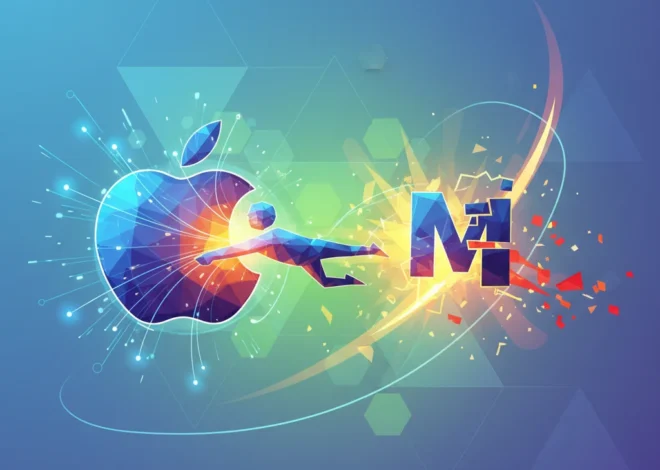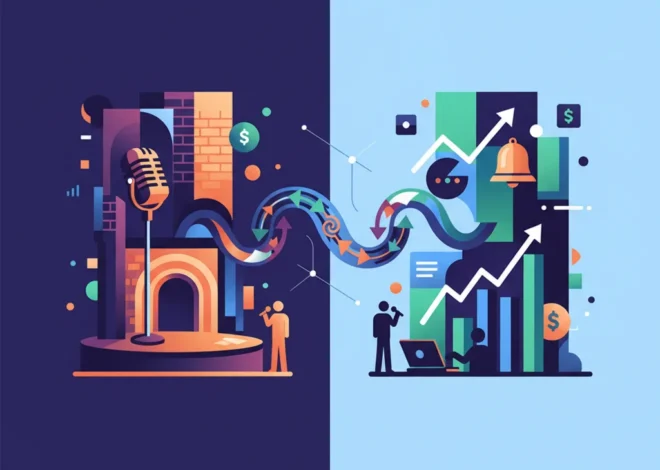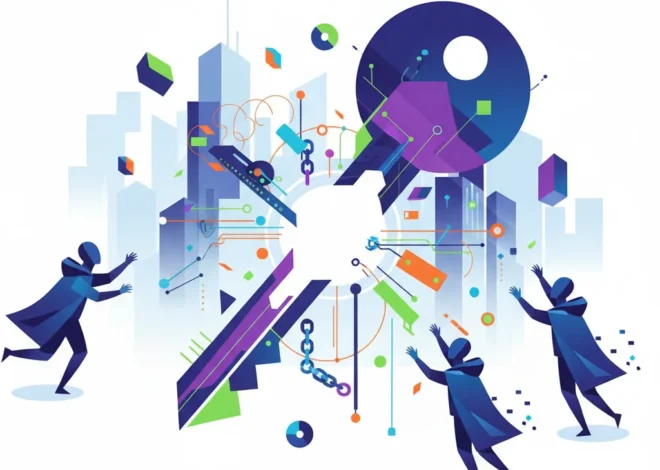
The Code to Continuous Learning: Why Your Tech Team’s Best Teacher Is… Each Other
In the tech world, the only constant is change. One minute you’re mastering a JavaScript framework, the next you’re expected to understand the nuances of a new cloud deployment strategy. And let’s not even talk about the blistering pace of artificial intelligence, where new models and techniques seem to drop every week. For developers, entrepreneurs, and tech leaders, the pressure to keep up is immense. The big question is: how do we *actually* learn and retain all this new information?
For decades, the default answer has been formal training. We send our teams to workshops, buy them subscriptions to video courses, and hope for the best. But if we’re being honest, how much of that passive learning sticks? How often does a two-day seminar translate into a tangible improvement in the way we build software?
A thought-provoking piece from the Financial Times touches on a powerful, yet often overlooked, truth: “With the right culture, people can learn from each other and often very effectively.” This isn’t just a feel-good sentiment; it’s a strategic imperative. The future of upskilling isn’t about top-down training modules; it’s about fostering an environment of active, collaborative, hands-on learning.
The Factory Model of Learning is Broken
We often treat learning like an assembly line. We input information through lectures and reading, and expect a skilled employee to come out the other end. Unfortunately, the human brain doesn’t work that way. This “factory model” ignores a fundamental principle of memory: the Ebbinghaus Forgetting Curve.
First described by psychologist Hermann Ebbinghaus in the 1880s, the Forgetting Curve shows how quickly we lose information if we don’t make an effort to retain it. Studies based on his work show that without reinforcement, we can forget as much as 75% of what we’ve learned within just six days. When you sit through a day-long workshop on a new cybersecurity protocol, you’re fighting a losing battle against your own memory.
This is especially true for complex, practical skills required in tech. You can’t learn to architect a scalable SaaS application or debug a tricky machine learning algorithm by watching a video. You learn it by getting your hands dirty, by hitting roadblocks, by asking a colleague for help, and by seeing a problem through to its solution. Passive consumption creates awareness; active participation creates expertise.
The Science of “Learning by Doing”: From Theory to Terminal
The alternative to the factory model is experiential learning, or “learning by doing.” This isn’t a new-age fad; it’s a concept rooted in decades of psychological research. It works because it engages different parts of the brain. When you actively apply a concept, you’re not just memorizing it; you’re building new neural pathways. You’re connecting abstract knowledge to a concrete outcome.
Consider the process of learning a new programming language. Which is more effective?
- Reading a 300-page book on Python syntax.
- Building a small web scraper in Python with a senior developer guiding you.
The answer is obvious. The second approach forces you to solve real problems. You’ll encounter errors, search for solutions, and understand the “why” behind the syntax, not just the “what.” This active struggle is where deep learning happens. When you add a social component—learning from a peer—the effect is amplified. This is Vygotsky’s “Zone of Proximal Development” in action: we learn best when we tackle problems just beyond our current abilities with the guidance of someone more experienced.
The Ultimate Tech Debt: Why America's Military is Buying Hardware and Forgetting the Software
How to Build a Thriving Learning Culture (Instead of Just a Training Budget)
Shifting from a “training” mindset to a “learning” mindset requires a deliberate cultural shift. It’s less about scheduling events and more about shaping daily interactions. Here are the pillars of a culture built on active, peer-to-peer learning:
1. Establish Psychological Safety Above All Else
Before any meaningful collaboration can happen, your team members need to feel safe. Safe to ask “stupid” questions. Safe to admit they don’t know something. Safe to fail and share their mistakes as learning opportunities. Google’s famous Project Aristotle study found that psychological safety was the single most important dynamic in successful teams. Without it, your junior developers will stay quiet, your mid-level engineers will hide their struggles, and your best chance at organic knowledge sharing will evaporate.
2. Systematize Collaborative Practices
Don’t just hope for collaboration; build it into your workflows. These aren’t just “nice-to-haves”; they are powerful learning mechanisms that drive innovation.
- Pair Programming: Two developers, one keyboard. This is a real-time mentorship and knowledge transfer session. The junior dev learns practical skills, and the senior dev often solidifies their own understanding by teaching.
- Internal Tech Talks: Encourage team members to present on topics they’re passionate about, whether it’s a new automation tool they’ve discovered or a deep dive into a recent project’s architecture.
- Project-Based “Stretch” Goals: Assign tasks that are just outside a team member’s comfort zone, but provide them with a mentor or support system to ensure they succeed.
- Code Reviews as a Dialogue: Frame code reviews not as a critique, but as a conversation. It’s a chance to share different approaches, discuss trade-offs, and collectively raise the quality of the team’s output.
The difference between passive and active learning methods is stark. Here’s a quick comparison of their typical engagement levels and retention rates:
| Learning Method | Approach | Typical Retention Rate | Example |
|---|---|---|---|
| Lecture / Webinar | Passive | ~5-10% | Watching a presentation on new AI frameworks. |
| Reading | Passive | ~10% | Reading documentation for a cloud service. |
| Demonstration | Observational | ~30% | Watching a senior dev configure a CI/CD pipeline. |
| Discussion Group | Active / Social | ~50% | A team “brown bag” session to discuss a cybersecurity threat. |
| Practice by Doing | Active | ~75% | Building a small application using the new AI framework. |
| Teaching Others | Active / Social | ~90% | Mentoring a junior dev on the new CI/CD pipeline. |
Beyond the Zap: How AI and the Cloud are Transforming the Taser
The Tangible ROI of a Learning-Obsessed Culture
Investing in a culture of continuous learning isn’t just about employee happiness; it’s a strategic investment with a clear return. For startups and established companies alike, the benefits are profound.
- Accelerated Innovation: Teams that learn together can connect disparate ideas more effectively, leading to more creative solutions and faster product development. When knowledge flows freely, innovation isn’t siloed; it’s a collective effort.
- Increased Agility: A team that is adept at learning can pivot quickly. When a new technology emerges or a market shifts, they don’t wait for a training course; they dive in, learn from each other, and adapt on the fly.
- Improved Talent Retention: The best talent wants to grow. In a competitive market, opportunities for professional development are a powerful retention tool. A Gallup report found that 87% of millennials rate “professional or career growth and development opportunities” as important to them in a job. When you stop providing growth, your best people start looking elsewhere.
- Enhanced Problem-Solving: A culture of shared knowledge creates a deeper collective intelligence. When someone hits a complex bug or a design challenge, they can tap into the experience of the entire team, solving problems faster and more robustly.
The Billion Handshake: Why Tech Giants Are Pouring a Fortune into AI's Physical Backbone
Stop Training, Start Cultivating
The challenge for modern tech leaders is to evolve from being providers of training to being cultivators of a learning environment. Your role isn’t to have all the answers, but to create a space where answers can be discovered, shared, and iterated upon collectively.
Tear down the knowledge silos. Celebrate questions as much as you celebrate answers. Reward collaboration and mentorship. Give your team the time, the tools, and—most importantly—the psychological safety to learn by doing. Because in an industry that never stops changing, the only sustainable advantage is the ability to learn faster than the competition. And that happens not in a classroom, but in the collaborative, creative, and sometimes chaotic process of building something great, together.


